-
 Bitcoin
Bitcoin $107,631.9817
-1.73% -
 Ethereum
Ethereum $2,739.1787
-4.61% -
 Tether USDt
Tether USDt $1.0000
-0.01% -
 XRP
XRP $2.2427
-3.30% -
 BNB
BNB $664.0527
-0.73% -
 Solana
Solana $158.0902
-5.38% -
 USDC
USDC $0.9998
-0.01% -
 Dogecoin
Dogecoin $0.1876
-7.78% -
 TRON
TRON $0.2753
-3.21% -
 Cardano
Cardano $0.6820
-5.55% -
 Hyperliquid
Hyperliquid $43.0171
-0.38% -
 Sui
Sui $3.3308
-4.87% -
 Chainlink
Chainlink $14.3431
-7.89% -
 Avalanche
Avalanche $21.0266
-6.48% -
 Bitcoin Cash
Bitcoin Cash $437.7657
-1.56% -
 Stellar
Stellar $0.2746
-2.52% -
 UNUS SED LEO
UNUS SED LEO $8.8665
-1.96% -
 Toncoin
Toncoin $3.1885
-3.37% -
 Shiba Inu
Shiba Inu $0.0...01260
-6.84% -
 Hedera
Hedera $0.1686
-4.93% -
 Litecoin
Litecoin $88.8406
-5.16% -
 Polkadot
Polkadot $4.0542
-6.28% -
 Monero
Monero $322.5806
-4.20% -
 Ethena USDe
Ethena USDe $1.0004
-0.02% -
 Bitget Token
Bitget Token $4.7089
-3.10% -
 Dai
Dai $0.9998
-0.01% -
 Pepe
Pepe $0.0...01206
-9.06% -
 Uniswap
Uniswap $7.8694
-5.20% -
 Pi
Pi $0.6232
-2.68% -
 Aave
Aave $301.3815
-3.83%
How to cooperate with the bottom divergence of SAR and MACD? MACD divergence is more effective when SAR reverses?
Combining SAR and MACD can signal potential trend reversals in crypto trading, especially when bottom divergence occurs, enhancing trading strategies.
Jun 08, 2025 at 11:21 pm
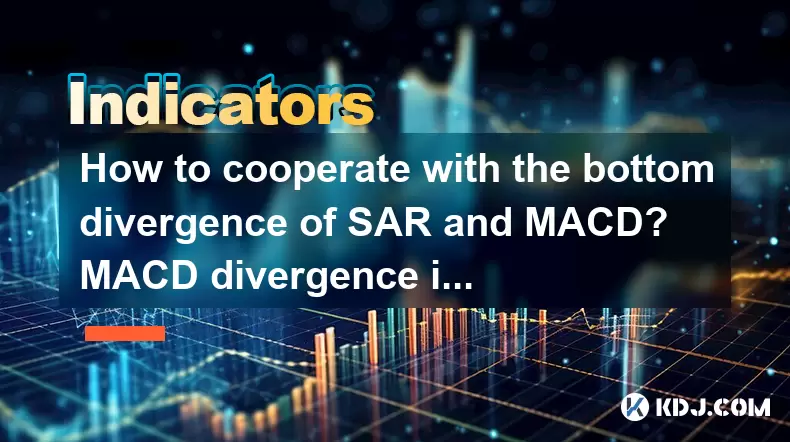
The cooperation between the Parabolic Stop and Reverse (SAR) and the Moving Average Convergence Divergence (MACD) indicators can be a powerful tool for cryptocurrency traders looking to identify potential trend reversals and capitalize on market movements. Understanding how these two indicators work together, especially in the context of bottom divergence, can enhance trading strategies. This article will explore how to effectively combine SAR and MACD, focusing on their divergence and reversal signals.
Understanding SAR and MACD
Before delving into their cooperation, it's essential to understand each indicator's function:
SAR (Parabolic Stop and Reverse) is a trend-following indicator that provides potential entry and exit points. It appears as a series of dots placed above or below the price, indicating the direction of the trend. When the dots are below the price, it suggests an uptrend, and when above, a downtrend.
MACD (Moving Average Convergence Divergence) is a momentum indicator that shows the relationship between two moving averages of a cryptocurrency's price. It consists of the MACD line, the signal line, and the histogram. The MACD line is calculated by subtracting the 26-period Exponential Moving Average (EMA) from the 12-period EMA. The signal line is a 9-period EMA of the MACD line.
Identifying Bottom Divergence
Bottom divergence occurs when the price of a cryptocurrency makes a new low, but the MACD does not follow suit, forming a higher low. This can be a signal that the downward momentum is weakening, and a potential reversal might be imminent.
To identify bottom divergence:
- Monitor the price chart for a new low.
- Check the MACD histogram for a higher low that does not correspond to the price low.
- Confirm with SAR to see if it is also signaling a potential reversal by moving from above the price to below it.
Cooperating SAR and MACD for Bottom Divergence
When SAR and MACD work together to signal a bottom divergence, traders can use this to their advantage. Here's how to cooperate these indicators effectively:
- Observe SAR Movement: If SAR dots switch from being above the price to below it, this indicates a potential shift from a downtrend to an uptrend.
- Identify MACD Divergence: Look for a situation where the price hits a new low, but the MACD histogram shows a higher low.
- Confirm with Both Indicators: When SAR signals a reversal and MACD shows bottom divergence, this combination can be a strong buy signal.
MACD Divergence Effectiveness When SAR Reverses
The effectiveness of MACD divergence can be heightened when SAR also reverses. This synergy provides a more robust signal for traders:
- SAR Reversal: When SAR moves from above the price to below it, it indicates that the downtrend may be ending.
- MACD Divergence: If this reversal coincides with MACD bottom divergence, the signal is strengthened because it shows not only a potential trend change but also that the momentum behind the price movement is shifting.
Practical Application in Trading
To apply these concepts in trading, follow these steps:
- Select a Cryptocurrency: Choose a cryptocurrency to trade based on your analysis and market conditions.
- Set Up Indicators: On your trading platform, add both the SAR and MACD indicators to your chart.
- Monitor for Signals:
- Look for the price to make a new low.
- Check if the MACD histogram forms a higher low during this period.
- Observe if the SAR dots switch from above the price to below it.
- Execute Trades:
- If all conditions are met (SAR reversal and MACD bottom divergence), consider entering a long position.
- Set a stop-loss below the recent low to manage risk.
- Determine a take-profit level based on resistance levels or other technical analysis.
Analyzing Real-World Examples
To better understand how SAR and MACD cooperate, let's analyze a hypothetical scenario:
- Scenario: The price of Bitcoin makes a new low at $25,000. However, the MACD histogram forms a higher low at this point. Simultaneously, the SAR dots, which were previously above the price, move below it.
- Analysis: This scenario indicates a strong potential for a trend reversal. The bottom divergence in MACD suggests weakening bearish momentum, and the SAR reversal supports the notion of an upcoming uptrend.
- Action: A trader might enter a long position at the point of SAR reversal, setting a stop-loss just below $25,000 and targeting a take-profit at a higher resistance level, such as $28,000.
Risk Management and Strategy Refinement
While the cooperation of SAR and MACD can provide valuable signals, it's crucial to incorporate risk management and strategy refinement:
- Risk Management: Always use stop-loss orders to limit potential losses. Position sizing and diversification can also help manage risk.
- Strategy Refinement: Continuously backtest and refine your strategy based on historical data. Adjust parameters such as the sensitivity of SAR and the periods used in MACD to optimize performance.
Frequently Asked Questions
Q1: Can SAR and MACD be used for other types of divergence besides bottom divergence?
Yes, SAR and MACD can also be used to identify top divergence, where the price makes a new high, but the MACD forms a lower high. This indicates potential weakening of bullish momentum and could signal a reversal to a downtrend. The same principles of cooperation between SAR and MACD apply, but in the opposite direction.
Q2: How often should I check for SAR and MACD signals?
The frequency of checking for signals depends on your trading style. For day traders, checking every few hours or even more frequently might be necessary. Swing traders might check once or twice a day, while longer-term investors might only need to check weekly or monthly. It's important to balance between staying informed and avoiding overtrading.
Q3: Are there any specific cryptocurrencies that work better with SAR and MACD?
SAR and MACD can be applied to any cryptocurrency. However, cryptocurrencies with higher liquidity and trading volume, such as Bitcoin and Ethereum, tend to provide more reliable signals due to their price movements being less susceptible to manipulation and having more data points for analysis.
Q4: Can I use other indicators alongside SAR and MACD to improve my trading strategy?
Yes, combining SAR and MACD with other indicators can enhance your trading strategy. For example, using the Relative Strength Index (RSI) to confirm overbought or oversold conditions, or using trend lines and support/resistance levels to identify key price levels can provide additional context and improve the accuracy of your trades.
Disclaimer:info@kdj.com
The information provided is not trading advice. kdj.com does not assume any responsibility for any investments made based on the information provided in this article. Cryptocurrencies are highly volatile and it is highly recommended that you invest with caution after thorough research!
If you believe that the content used on this website infringes your copyright, please contact us immediately (info@kdj.com) and we will delete it promptly.
- Expert Predicts When Bitcoin (BTC) Price Could Hit a New All-Time High
- 2025-06-13 02:00:20
- US President Donald Trump Virtually Spoke at the Coinbase State of Crypto Summit
- 2025-06-13 02:00:20
- Arctic Pablo Coin (APC) Explodes Onto the Meme Coin Stage as One of the Top New Meme Coins for Exponential Returns
- 2025-06-13 01:55:12
- Litecoin (LTC) Price Nosedives as Bollinger Bands Signal Lingering Bearish Sentiment
- 2025-06-13 01:55:12
- DeFi Development Corp. (DFDV) Secures $5 Billion Equity Line of Credit from RK Capital Management
- 2025-06-13 01:50:12
- Tether Expands Gold Strategy with Stake in Elemental Altus Royalties
- 2025-06-13 01:50:12
Related knowledge
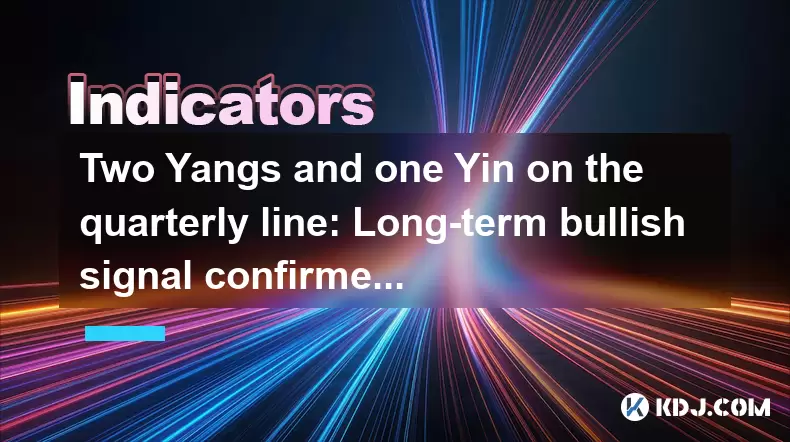
Two Yangs and one Yin on the quarterly line: Long-term bullish signal confirmed?
Jun 12,2025 at 07:00am
Understanding the 'Two Yangs and One Yin' Candlestick PatternIn technical analysis, candlestick patterns play a pivotal role in identifying potential market reversals or continuations. The 'Two Yangs and One Yin' pattern is one such formation that traders often observe on longer timeframes like the quarterly chart. This pattern consists of two bullish (...
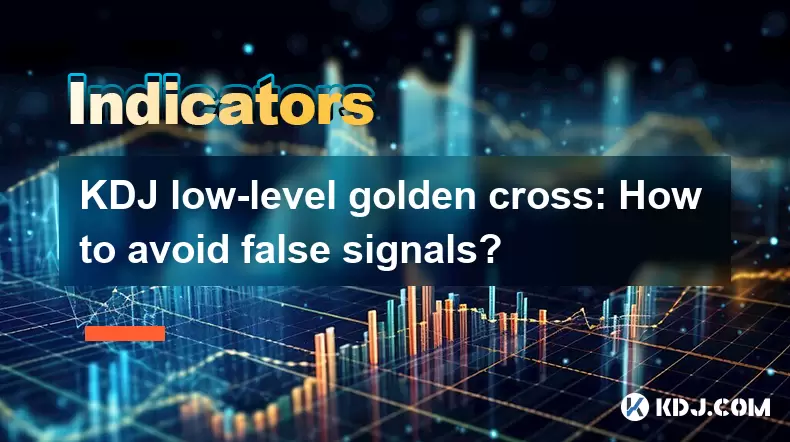
KDJ low-level golden cross: How to avoid false signals?
Jun 12,2025 at 08:21am
Understanding the KDJ IndicatorThe KDJ indicator, also known as the stochastic oscillator, is a momentum-based technical analysis tool widely used in cryptocurrency trading. It consists of three lines: the %K line (fast stochastic), the %D line (slow stochastic), and the %J line (divergence value). These lines oscillate between 0 and 100, helping trader...

Bottom-up volume stagnation: Is it accumulation or heavy selling pressure?
Jun 12,2025 at 01:42pm
What Is Bottom-Up Volume Stagnation?Bottom-up volume stagnation refers to a specific pattern observed in cryptocurrency trading charts where the price of an asset moves sideways or slightly downward, and trading volume remains consistently low over an extended period. This phenomenon is often seen after a sharp price drop or during a prolonged bear mark...
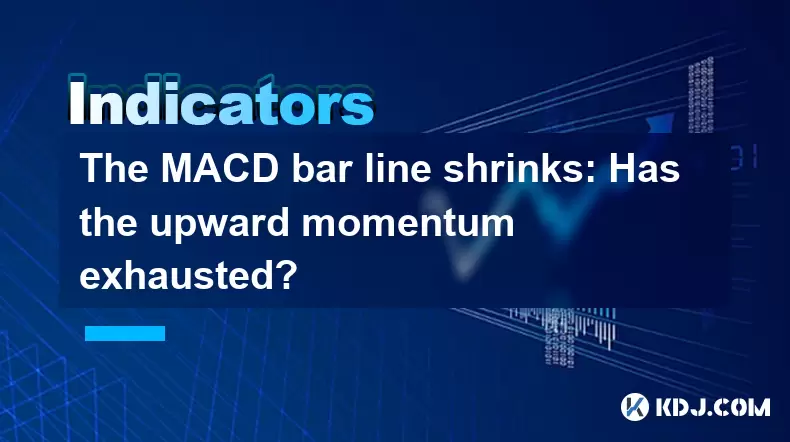
The MACD bar line shrinks: Has the upward momentum exhausted?
Jun 12,2025 at 12:49am
Understanding the MACD Bar LineThe Moving Average Convergence Divergence (MACD) is a widely used technical indicator in cryptocurrency trading. It consists of three main components: the MACD line, the signal line, and the MACD histogram (also known as the bar line). The MACD bar line represents the difference between the MACD line and the signal line. W...

The chip peak moves up: Is the main force quietly shipping?
Jun 12,2025 at 01:01am
Understanding the Chip Peak Movement in Cryptocurrency MiningIn recent years, the chip peak movement has become a critical topic within the cryptocurrency mining community. This phrase typically refers to the point at which mining hardware reaches its maximum efficiency and output capacity. When this peak shifts upward, it often signals changes in the s...
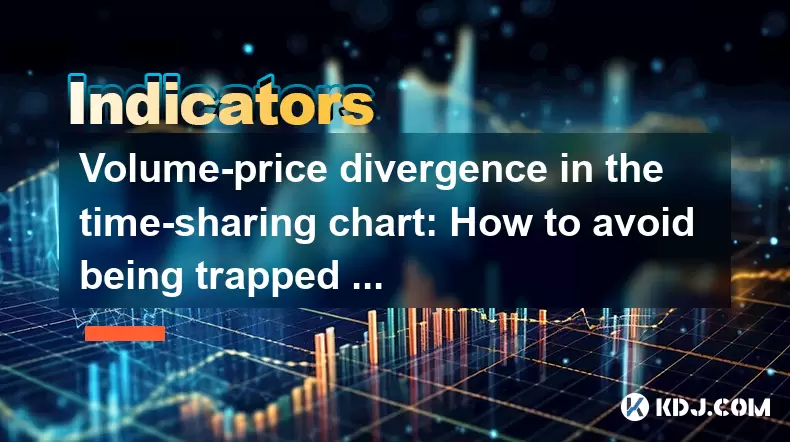
Volume-price divergence in the time-sharing chart: How to avoid being trapped on the same day?
Jun 12,2025 at 07:28pm
Understanding Volume-Price Divergence in Cryptocurrency TradingVolume-price divergence is a critical concept in technical analysis, especially within the fast-moving world of cryptocurrency trading. It refers to a situation where price movement and trading volume move in opposite directions. For instance, if the price of a cryptocurrency is rising while...

Two Yangs and one Yin on the quarterly line: Long-term bullish signal confirmed?
Jun 12,2025 at 07:00am
Understanding the 'Two Yangs and One Yin' Candlestick PatternIn technical analysis, candlestick patterns play a pivotal role in identifying potential market reversals or continuations. The 'Two Yangs and One Yin' pattern is one such formation that traders often observe on longer timeframes like the quarterly chart. This pattern consists of two bullish (...

KDJ low-level golden cross: How to avoid false signals?
Jun 12,2025 at 08:21am
Understanding the KDJ IndicatorThe KDJ indicator, also known as the stochastic oscillator, is a momentum-based technical analysis tool widely used in cryptocurrency trading. It consists of three lines: the %K line (fast stochastic), the %D line (slow stochastic), and the %J line (divergence value). These lines oscillate between 0 and 100, helping trader...

Bottom-up volume stagnation: Is it accumulation or heavy selling pressure?
Jun 12,2025 at 01:42pm
What Is Bottom-Up Volume Stagnation?Bottom-up volume stagnation refers to a specific pattern observed in cryptocurrency trading charts where the price of an asset moves sideways or slightly downward, and trading volume remains consistently low over an extended period. This phenomenon is often seen after a sharp price drop or during a prolonged bear mark...

The MACD bar line shrinks: Has the upward momentum exhausted?
Jun 12,2025 at 12:49am
Understanding the MACD Bar LineThe Moving Average Convergence Divergence (MACD) is a widely used technical indicator in cryptocurrency trading. It consists of three main components: the MACD line, the signal line, and the MACD histogram (also known as the bar line). The MACD bar line represents the difference between the MACD line and the signal line. W...

The chip peak moves up: Is the main force quietly shipping?
Jun 12,2025 at 01:01am
Understanding the Chip Peak Movement in Cryptocurrency MiningIn recent years, the chip peak movement has become a critical topic within the cryptocurrency mining community. This phrase typically refers to the point at which mining hardware reaches its maximum efficiency and output capacity. When this peak shifts upward, it often signals changes in the s...

Volume-price divergence in the time-sharing chart: How to avoid being trapped on the same day?
Jun 12,2025 at 07:28pm
Understanding Volume-Price Divergence in Cryptocurrency TradingVolume-price divergence is a critical concept in technical analysis, especially within the fast-moving world of cryptocurrency trading. It refers to a situation where price movement and trading volume move in opposite directions. For instance, if the price of a cryptocurrency is rising while...
See all articles

























































































